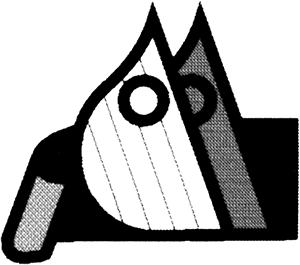Composing the text of classical Arabic poetry is a tremendous challenge typically avoided by musicians seeking the rewards of mass appeal. Regional dialects are favored due to the supposed ease on listeners, especially adolescent consumers of CDs and music DVDs. So when a composer dusts off the poetry of the little-known Abu al-Mughith al-Hussayn Ibn Mansur al-Hallaj, who was brutally executed in Baghdad in 922 for his pacifist Sufi writings, it is an indication of a rare musical confidence.
In his new CD, “Al-Hallaj,” Issa Boulos composes eight poems by its namesake in a remarkable landmark in Arab-musicological and Sufi history. Boulos is an award-winning Chicago-based composer and oud player as well as a lecturer at the University of Chicago, where he directs the Middle East Music Ensemble. Among his numerous accomplishments is a commission by the Chicago Symphony Orchestra and writing the music for the documentaries “The New Americans” and “Nice Bombs.” His other works include “Kawkab Akhar,” “Shortly After Life,” “Lysistrata,” “Catharsis,” “Sama,” “Being Peace,” “A Palestinian Memoir,” and “Rif.”
In the instrumental CD “Rif” (Countryside), the Turkish kemence master Nermin Kaygusuz performs a dozen of Boulos’ compositions that were inspired by interacting with objects and concepts taken for granted in the Eastern Mediterranean: the fig tree, the color of the soil, the dew and the insects. The kemence (common Turkish name for two very different instruments, one used in north Anatolian folk music, and the other in Turkish classical music) expressed what Boulos felt was the appropriate tone for both the simplicity and sophistication needed to paint the intended images, such as, in one example track titled “Raqsat al-Khityar,” of an old man dancing in a village wedding one day after his wife passed away. Boulos’ work is clearly that of a reflective thinker.
In researching Sufi texts, Issa Boulos was moved by what was preserved from the millennium-old work of al-Hallaj and invested admirable effort in bringing it to life. In this difficult process, he needed to sort the classical musical tradition, developed as the court music, from the Sufi musical practices in zawaya found in less courtly parts of towns, sometimes in secret and mixed with local musical elements. He sought to maintain fidelity to the Sufi text and the imagined poet’s environment while utilizing the better-documented tools of the maqam system, the formal modal structure essential to composing in the classical Arab style. His creative approach produced composed texts harmonious (only figuratively since the structure does not lend itself to harmony) with both the maqam tradition and the poem’s philosophical spirit, while paying careful attention to all technical and interpretive details.
The CD was recorded in Ramallah with the qanun beautifully standing out as the primary instrument in the hands of the talented Ibrahim Atari. Educated at the Edward Said Conservatory (formerly National Conservatory of Music), Atari is no stranger to Sufi music as he co-established an ensemble dedicated to singing Sufi poems. A former student of Boulos, a graduate of the conservatory, and an instrument maker, Samer Totah brilliantly plays the oud. Yousef Zayed capably performs the percussion instruments, and Issa Boulos supported the recording on the oud and voice. The primary vocal responsibility to express al-Hallaj’s lyrics is trusted to the passion-filled voice of Basel Zayed. The Jerusalem-born singer, another former Boulos student, is also an oud player, composer and ensemble leader.
In discovering Al-Hallaj, one actually discovers Issa Boulos, an Arab-American intellectual powerhouse whose work is highly significant in maintaining musical artistry little appreciated by Arab societies. Very few production companies support projects of this class, and grants are rare. It is clear from his choices and career path that he is dedicated to the preservation of quality art and, more interestingly, creating such art in ancient and modern contexts.
This article appeared in Al Jadid Magazine, Vol. 15, No. 61, 2009.
Copyright © 2009 AL JADID MAGAZINE

